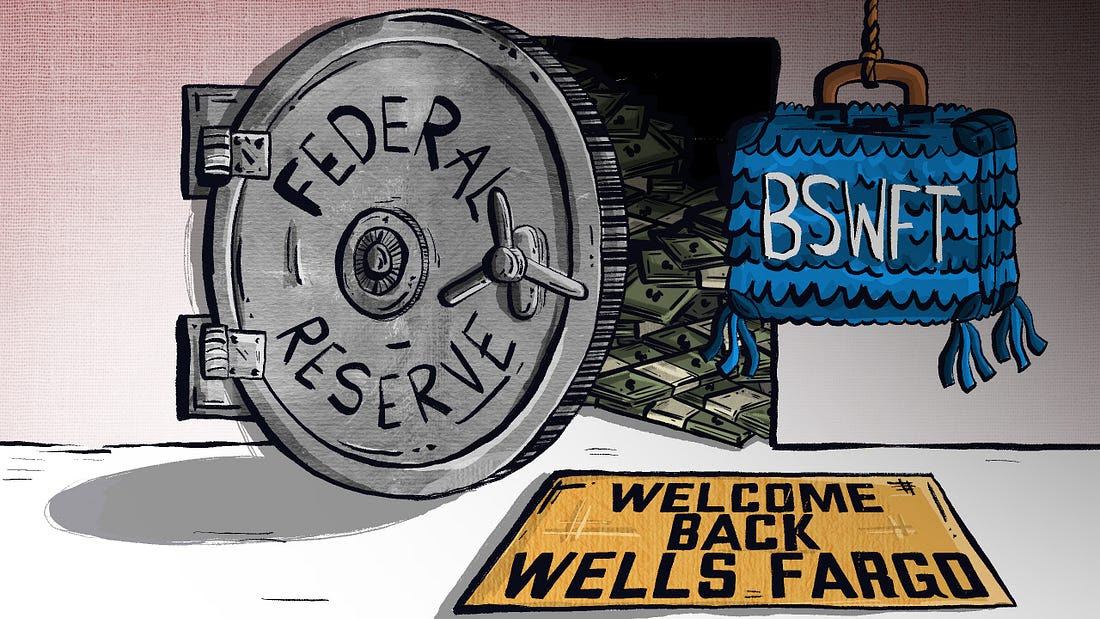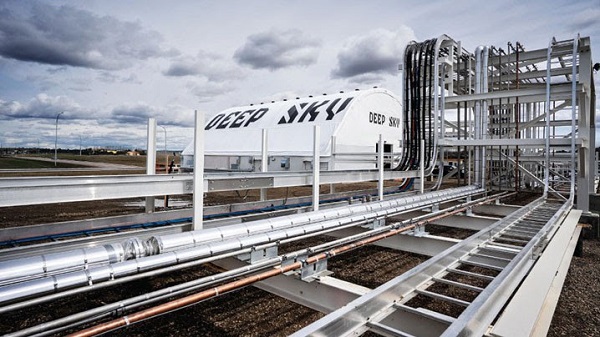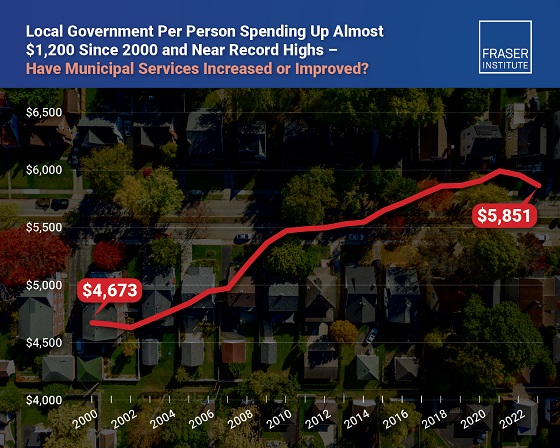Business
My European Favourites: Český Krumlov

Český Krumlov is the most picturesque medieval town in the Czech Republic, and one of the best small town destinations in Central Europe. Český Krumlov is located in the South Bohemia Region of the Czech Republic about a two hour drive directly south from Prague and only thirty minutes from the nearby city of Ceske Budejovice. It is only about thirty kilometers from the Austrian border, and Linz is only an hour away. It is a natural stop from Prague to Salzburg, and we frequently stay in Ceske Budejovice, where many of our hockey groups play games or train at former NHL and Czech hockey star, Jaroslav Pouzar’s arena.
Český Krumlov’s old town, a UNESCO World Heritage Site, is nestled in between a meandering river and is surrounded by lush green hills and a towering castle above. With narrow cobblestone streets and a mixture of baroque and renaissance architecture, this could be the backdrop to any fairytale.
After we enter the town, we will park our bus across the street from a little park, called the Deer Garden, that is dwarfed by the back side of the Český Krumlov Castle. To get up to the castle, there is a path at an incline just on the right of the park or there are stairs up to the castle located at the back right of the park.
Once you reach the top, on the right you will find the eleven hectare castle garden. The garden includes a cascade fountain, an outdoor amphitheatre with a revolving auditorium, the Bellaria summer palace and the castle’s winter riding hall, which is now used to host special events.
If we go left instead of going into the park, a few steps away is a small gated entrance to a terrace that you should not miss. The terrace offers a spectacular panorama of the river, the town below, the castle on the left and the surrounding area. Your camera will be busy here and, at times, you will have numerous people jockeying for position to get that perfect shot. Please note that the terrace is not always open in the evening.

Cesky Krumlov Castle from the photo terrace and from the Lavka pod Zamkem wooden bridge.
Český Krumlov Castle
The Český Krumlov Castle dates back to 1240 when it was built by the Witigonen (Vitkovci) dynasty. In 1302, the Rosenberg dynasty became owners of the castle, and you will see their family’s five petalled rose logo at various locations throughout the city. In 1622, the castle was transferred to the Austrian Eggenberg family who expanded the castle, including adding the unique baroque theatre that bears their name. Today, the local brewery in Český Krumlov is named after the Eggenbergs. The Schwarzenberg family took over the castle from 1719 until 1947 when it was transferred to the Czechoslovak state. The castle complex, with five courtyards, is listed as a Czech National Monument and is listed on the UNESCO World Heritage List.
What would an old castle be without a good ghost story? In medieval times, the appearance of a White Lady during the day or night was an omen that someone in the family would soon die. At the Český Krumlov Castle, legend has it that the castle is haunted by their own White Lady, Perchta of Rosenberg. Her husband treated her poorly and on his death bed he asked her for forgiveness. She refused and her husband cursed her. Since her death, her ghost has haunted her former husband’s estates including the castle.

Cloak bridge, entrance into the 4th courtyard and frescoes on the courtyard walls.
When we leave the photo terrace, we cross the fifth castle courtyard surrounded by the baroque castle theatre and the renaissance house to the white and grey Cloak Bridge. The bridge, which offers more great views of the old town and river, has three stories above the arched walkway that connect the castle to the theatre.
Entering the area called the Upper Castle, we pass through two small courtyards, named the fourth and third castle courtyards. The courtyards’ facades were painted in the 16th and 17th centuries. The frescoes painted on flat walls use the “trompe–l’oeil” technique to create the optical illusion that the walls are three-dimensional brick with intricate stone decorations and inlayed statues. The “Upper Castle’s” renaissance interiors are palatial with an important collection of paintings, tapestries and furniture. The castle’s underground foundations, called the Wenceslas Cellars, are a labyrinth of pillars and arches. Exiting the third courtyard, we go down a steep and windy passage way, which may have been used for vehicles.

A sundial, the second courtyard fountain and tower. The first courtyard and the red gate.
Arriving at the second castle courtyard, we find the Burgrave’s house from 1578. The Burgrave, or “Count”, was the governor of the town, with judicial and military powers bestowed on him by the Holy Roman Emperor. From 1742-1948, the lower floor of the Burgrave’s house was used to house the Schwarzenberg grenadier guard.
The courtyard has a stone fountain from 1641 in the middle and the colorful castle tower in the corner. The tower and the adjoining “Hradek” building are the two oldest parts of the castle. If you climb the tower, you will get amazing views of the castle and the town.

The castle Bear Moat with bears enjoying bread, vegetables, apples and watermelon snacks.
To access the first courtyard, we cross a small bridge that has a Bear Moat below. There have been bears in the moat since 1707, and most times we can see them walking around or eating their vegetables and fruit. Unfortunately, we don’t always see them as they like the area under the bridge. This is the largest courtyard and was used as an agricultural area and animal enclosure. We leave the castle through the Red Gate and continue until we reach the Latrán street where we turn right. A few meters away on your left is the entrance to the Monastery.
Monastery of the Minorites
After the castle, the monastery is the second largest historic complex in Český Krumlov. The medieval monastery was founded for the brothers and sisters of the order of St. Francis of Assisi in 1350. St. Francis gave the name “Friar Minor” or “Minorites” to the Franciscans. The order of St. Clare, “Poor Claires” or the “Clarissas,” is the name of the female branch of the Franciscans. The monastery church located in the center of the complex separates the convents of the Minorites (here from 1357-1950) and Clarissas (here from 1361-1782).

The Latrán street, a Trdelník vendor and the crucifix on Lazebnicky bridge.
Latrán Street and Lazebnicky Most
The renaissance area just outside the castle and across the river from the old town center was once the home of castle servants. Today the cobble stone Latrán Street’s colorful houses are full of shops, cafes, restaurants and artist galleries. Just off the Latrán, you will find artist workshops featuring paintings, iron works, statues and furniture. Some of these artist workshops are decorated with interesting murals.
Undoubtably, you will be hit by the sweet aroma of the chimney cake or Trdelník. The Trdelník is a rolled dough which is wrapped around a thick spit, baked over hot coals and topped with sugar, walnuts and sometimes cinnamon. You can find variations of this treat throughout the Czech Republic, Slovakia and Hungary.
Connecting the Latrán street to the old town is the wooden Lazebnicky bridge with a large crucifix in the middle. Form the bridge, you have a magnificent view of the castle above, the Vltava river meandering its way around the town, and the riverfront houses and restaurant patios of the old town.

The Český Krumlov old town square with the Marian Plague column and city hall.
Historic Old Town
Once you cross the bridge, if you go forward on the Radniční street for about a hundred meters you will arrive at the Town Square. Instead, we will turn right and take the curved Dlouhá Street with interesting cafes, restaurants and hotels. At the end of the Dlouhá street, we arrive at the Široká street. Turning right we will come to the old mill where we can see the waterwheel still turning and we get another great view of the castle. We continue in the other direction leisurely making our way down the wide and vibrant Široká street until we reach a junction where three streets meet. This is a very picturesque little square with colorful buildings decorated with frescoes.
Only a few meters away from this junction, we find ourselves in the Český Krumlov town square or Náměstí Svornosti. The square has served not only as a market in medieval times, but also as a place of execution. The large white building with renaissance arcades is the 16th century Český Krumlov Town Hall. The four coats-of-arms painted on the façade of the building are those of the Eggenbergs, the Schwarzenbergs, the town and of the Czech state of Bohemia. Like many towns in the Czech Republic, the square has a Marian Plague Column with a fountain at the center. The plague columns give thanks to the Virgin Mary for the end of the plague that killed many throughout Europe in the 17th century. The beautiful buildings adorned with stucco decorations and frescoes around the square once belonged to the town’s upper class and have been restored to their original splendor.

The St. Vitus church from the river, the old town’s Široká street and the three street junction.
Church of St. Vitus
From the town square you will see the 19th century spire and tall roof of the Roman Catholic church of St. Vitus. A short climb up Horní Ulice street you will reach the church entrance. The gothic church has a white interior with an impressive vaulted ceiling supported by stone columns. The tall but clear gothic windows allow light to flood the nave and they push your eyes upwards to the magnificent ceiling. Dating back to the 13th century when the site became a place of worship, the church has undergone a few additions and changes over the years. The church is the burial place of notable Bohemian families including generations of the aforementioned Rosenbergs and Schwartzenbergs.
Not far from the church is a little garden called the Seminární Zahrada, or the Seminary Garden. The garden is part of the Regional Museum, which used to be a seminary for the Jesuits. Like the terrace by the castle, this garden is one of the best spots in town to get that spectacular panoramic photo. The castle and tower are prominent in the background, seemingly rising above a sea of the red tiled roofs below.

Panoramic view from the Seminary Garden and buskers on the Latrán Street.
Rafting on the Vltava
As you leave the old town back to the parking area, you will cross the Lavka pod Zamkem wooden bridge which leads to the Deer Garden. The bridge offers a few more photo opportunities of the river, the castle and the Cloak Bridge. One of the most interesting things to see from the bridge is the wier on the Vltava River that has a spot on the right for rafters to slide down from the higher water level to the lower level. Rafting is very popular, and in summer months you will see raft after raft leisurely floating down the river. The Malecek Rafting company offers canoe and raft rentals with trips of various durations from a thirty-minute trip in the city center all the way to half-day and full-day trips further down the river. They also offer a fifty-minute historical cruise on a twelve-person wooden raft. In the middle ages and beyond raftsmen used the Vltava to transport goods and raw materials like wood and salt. Today, people can enjoy this experience in amazing surroundings.

Rafters and canoers going down the Vltava Rivers’ weir and leisurely past the castle.
Český Krumlov has many small museums worth visiting. My favourite is the Museum of Commerce (Muzeum Obchodu) located in the old town just as you cross the Lazebnicky bridge. The museum has recreated shop interiors, shop machinery and advertising from the early 1900s. Individual packaging of products, like we are used to today, was non-existent. They have a great display of metal dispensary containers where customers would get their coffee beans, sugar, flour or other goods. They also have old style metallic advertising signs for sale. Across from that museum, there is an antique shop with very unique items and next door is the Fairytale House & Puppet Museum.
Other museums you may want to visit in Český Krumlov include the Museum Fotoatelier Seidel, the Egon Schiele Art Centrum, the Moldavite Museum (Muzeum Vltavinu), the Regional Museum and the Torture Museum. There are many other little museums around town worth visiting. Nearby, hikers enjoy climbing the 1,084 meter high Mount Klet’ and guided tours of the Graphite Mine.
Český Krumlov is the second most popular tourist destination in the Czech Republic. I have been to this medieval town numerous times with my tour groups and I am always excited to include it in my itineraries.
Explore Europe With Us
Azorcan Global Sport, School and Sightseeing Tours have taken thousands to Europe on their custom group tours since 1994. Visit azorcan.net to see all our custom tour possibilities for your group of 26 or more. Individuals can join our “open” signature sport, sightseeing and sport fan tours including our popular Canada hockey fan tours to the World Juniors. At azorcan.net/media you can read our newsletters and listen to our podcasts.
Images compliments of Paul Almeida and Azorcan Tours.
(This article was originally published on April 11, 2021).
Click below to read Paul’s sobering story about Canada’s role in WWI.
Banks
Welcome Back, Wells Fargo!

 Racket News
Racket News
By Eric Salzman
The heavyweight champion of financial crime gets seemingly its millionth chance to show it’s reformed
The past two decades have been tough ones for Wells Fargo and the many victims of its sprawling crime wave. While the banking industry is full of scammers, Wells took turning time honored street-hustles into multi-billion dollar white-collar hustles to a new level.
The Federal Reserve announced last month that Wells Fargo is no longer subject to the asset growth restriction the Fed finally enforced in 2018 after multiple scandals. This was a major enforcement action that prohibited Wells from growing existing loan portfolios, purchasing other bank branches or entering into any new activities that would result in their asset base growing.
Upon hearing the news that Wells was being released from the Fed’s penalty box, my mind turned to this pivotal moment in the classic movie “Slapshot.”
Here are some of Wells Fargo’s lowlights both before and after the Fed’s enforcement action:
- December 2022: Wells Fargo paid more than $2 billion to consumers and $1.7 billion in civil penalties after the Consumer Financial Protection Bureau (CFPB) found mismanagement — including illegal fees and interest charges — in several of its biggest product lines, such as auto loans, mortgages, and deposit accounts.
- September 2021: Wells Fargo paid $72.6 million to the Justice Department for overcharging foreign exchange customers from 2010-2017.
- February 2020: Wells Fargo paid $3 billion to settle criminal and civil investigations by the Justice Department and SEC into its aggressive sales practices between 2002 and 2016. About $500 million was eventually distributed to investors.
- January 2020: The Office of the Comptroller of the Currency (OCC) banned two senior executives, former CEO John Stumpf and ex-Head of Community Bank Carrie Tolstedt, from the banking industry. Stumpf and Tolstedt also incurred civil penalties of $17.5 million and $17 million.
- August 2018: The Justice Department levied a $2.09 billion fine on Wells Fargo for its actions during the subprime mortgage crisis, particularly its mortgage lending practices between 2005 and 2007.
- April 2018: Federal regulators at the CFPB and OCC examined Wells’ auto loan insurance and mortgage lending practices and ordered the bank to pay $1 billion in damages.
- February 2018: The aforementioned Fed enforcement action. In addition to the asset growth restriction, Wells was ordered to replace three directors.
- October 2017: Wells Fargo admitted wrongdoing after 110,000 clients were fined for missing a mortgage payment deadline — delays for which the bank was ultimately deemed at fault.
- July 2017: As many as 570,000 Wells Fargo customers were wrongly charged for auto insurance on car loans after the bank failed to verify whether those customers already had existing insurance. As a result, up to 20,000 customers may have defaulted on car loans.
- September 2016: Wells Fargo acknowledged its employees had created 1.5 million deposit accounts and 565,000 credit card accounts between 2002 and 2016 that “may not have been authorized by consumers,” according to CFPB. As a result, the lender was forced to pay $185 million in damages to the CFPB, OCC, and City and County of Los Angeles.
Additionally, somehow in 2023 Wells even managed to drop $1 billion in a civil settlement with shareholders for overstating their progress in complying with their 2018 agreement with the Fed to clean themselves up!
I imagine if Wells were in any other business, it wouldn’t be allowed to continue. But Wells is part of the “Too Big to Fail” club. Taking away its federal banking charter would be too disruptive for the financial markets, so instead they got what ended up being a seven-year growth ban. Not exactly rough justice.
While not the biggest settlement, my favorite Wells scam was the 2021 settlement of the seven-year pilfering operation, ripping off corporate customers’ foreign exchange transactions.
Like many banks, Wells Fargo offers its corporate clients with global operations foreign exchange (FX) services. For example, if a company is based in the U.S. but has extensive dealings in Canada, it may receive payments in Canadian dollars (CAD) that need to be exchanged for U.S. dollars (USD) and vice versa. Wells, like many banks, has foreign exchange specialists who do these conversions. Ideally, the banks optimize their clients’ revenue and decrease risk, in return for a markup fee, or “spread.”
There’s a lot of trust involved with this activity as the corporate customers generally have little idea where FX is trading minute by minute, nor do they know what time of day the actual orders for FX transactions — commonly called “BSwifts” — come in. For an unscrupulous bank, it’s a license to steal, which is exactly what Wells did.
According to the complaint, Wells regularly marked up transactions at higher spreads than what was agreed upon. This was just one of the variety of naughty schemes Wells used to clobber their customers. My two favorites were “The Big Figure Trick” and the “BSwift Pinata.”
The Big Figure Trick
Let’s say a client needs to sell USD for CAD, and that the $1 USD is worth $1.32 CAD. In banking parlance, the 32 cents is called the “Big Figure.” Wells would buy the CAD at $1.32 for $1 USD and then transpose the actual exchange rate on the customer statement from $1.32 to $1.23. If the customer didn’t notice, Wells would pocket the difference. On a transaction where the client is buying 5 million CAD with USD, the ill-gotten gain for Wells would be about $277,000 USD!
Conversely, if the customer did notice the difference, Wells would just blame it on the grunts in its operational back office, saying they accidentally transposed the number and “correct” the transaction. From the complaint, here is some give and take between two Wells FX specialists:
“You can play the transposition error game if you get called out.” Another FX sales specialist noted to a colleague about a previous transaction that a customer “didn’t flinch at the big fig the other day. Want to take a bit more?”
The BSwift Piñata
The way this hustle would work is, let’s say the Wells corporate customer was receiving payment from one of their Canadian clients. The Canadian client’s bank would send a BSwift message to Wells. The Wells client was in the dark about the U.S. dollar-Canadian dollar exchange rate because it had no idea what time of day the message arrived. Wells took advantage of that by purchasing U.S. dollars for Canadian dollars first. For simplicity, think of the U.S. dollar-Canadian dollar exchange rate as a widget that Wells bought for $1. If the widget increased in value, say to $1.10 during the day, Wells would sell the widget they purchased for $1 to the client for $1.10 and pocket 10 cents. If the price of the widget Wells bought for $1 fell to 95 cents, Wells would just give up their $1 purchase to the client, plus whatever markup they agreed to.
Heads, Wells wins. Tails, client loses.
The complaint notes that a Wells FX specialist wrote that he:
“Bumped spreads up a pinch,” that “these clients who are in the mode of just processing wires will most likely not notice this slight change in pricing” and that it “could have a very quick positive impact on revenue without a lot of risk.”
Talk about a boiler room operation. Personally, I think calling what you are doing to a client a “piñata” should have easily put Wells in the Fed’s penalty box another 5 years at least!
Wells has been released from the Fed’s 2018 enforcement order. I would like to think they have learned their lesson and are reformed, but I would lay good odds against it. A leopard can’t change its spots.
Racket News is a reader-supported publication.
Consider becoming a free or paid subscriber.
Alberta
Pierre Poilievre – Per Capita, Hardisty, Alberta Is the Most Important Little Town In Canada

From Pierre Poilievre
-

 Business2 days ago
Business2 days agoOttawa Funded the China Ferry Deal—Then Pretended to Oppose It
-

 COVID-192 days ago
COVID-192 days agoNew Peer-Reviewed Study Affirms COVID Vaccines Reduce Fertility
-

 MAiD2 days ago
MAiD2 days agoCanada’s euthanasia regime is not health care, but a death machine for the unwanted
-

 Alberta2 days ago
Alberta2 days agoThe permanent CO2 storage site at the end of the Alberta Carbon Trunk Line is just getting started
-

 Business2 days ago
Business2 days agoWorld Economic Forum Aims to Repair Relations with Schwab
-

 Alberta2 days ago
Alberta2 days agoAlberta’s government is investing $5 million to help launch the world’s first direct air capture centre at Innisfail
-

 Business2 days ago
Business2 days agoMunicipal government per-person spending in Canada hit near record levels
-

 Business2 days ago
Business2 days agoA new federal bureaucracy will not deliver the affordable housing Canadians need





